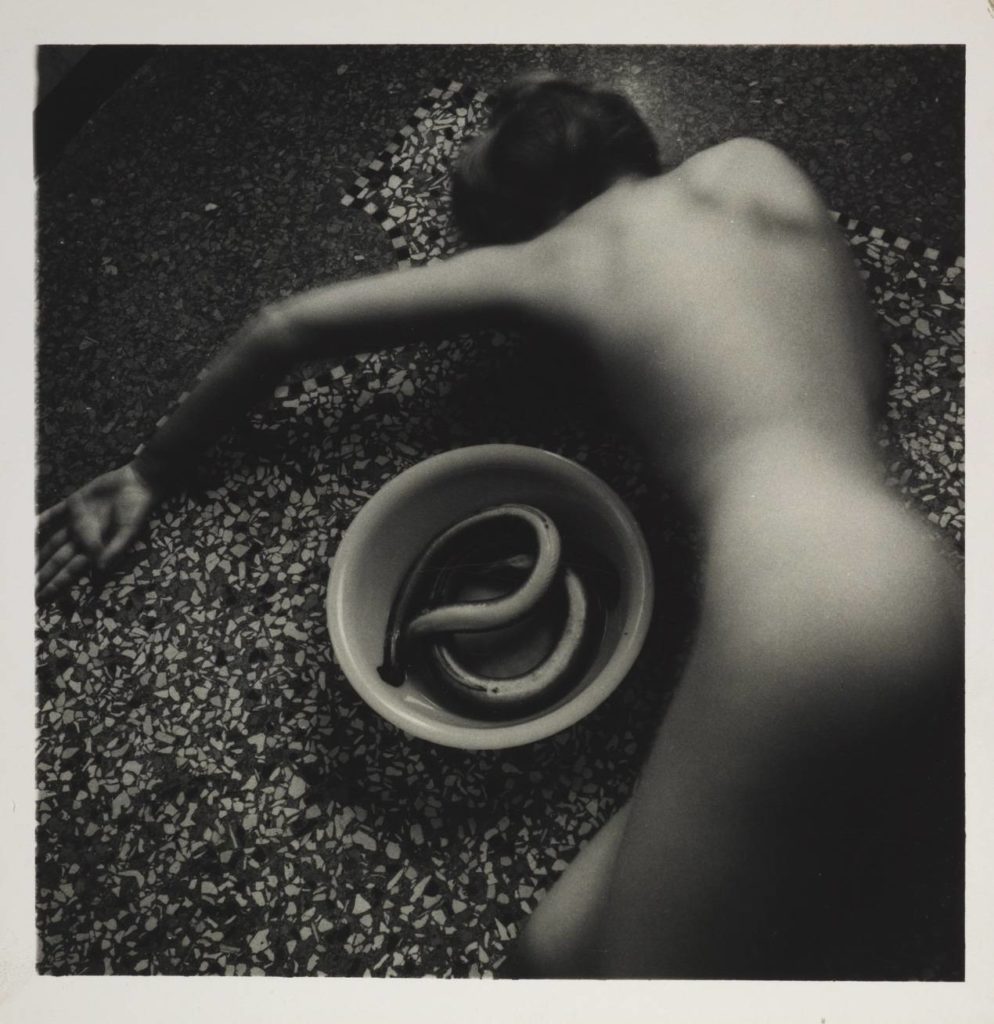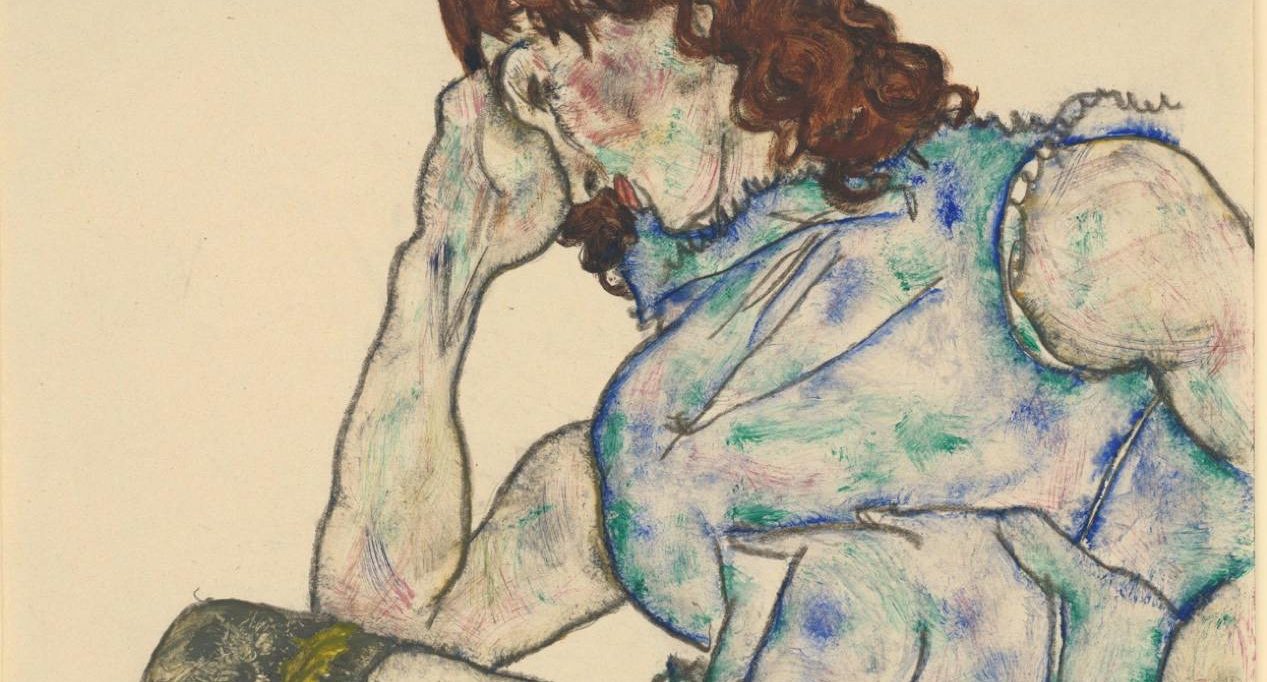Space and time
They were born a century apart but both shocked audiences with their depictions of female nudity. Antonia Charlesworth finds out more about the lives and works of Egon Schiele and Francesca Woodman
Radical Austrian expressionist Egon Schiele’s (1890-1918) work was so shocking that he was targeted by police, who seized more than 100 of his works considered to be pornographic. His extensive body of work is characterised by its intensity and its raw sexuality and emotion. The same themes can be found in the work of American photographer Francesca Woodman (1958-1981), who is best known for her black and white pictures, which, like Schiele’s, were often nude self-portraits or female nudes. For the first time their work is brought together in a major exhibition, Life in Motion, at Tate Liverpool, 24 May-23 Sept. Tamar Hemmes, one of the show’s curators, tells us more.
Tell us about the main theme of this exhibition – motion – and how the artists each portray it in their work.
Both Egon Schiele and Francesca Woodman created intimate works that seem to capture brief moments in time, often depicting their subjects in the midst of a movement. Schiele’s drawings were made using quick, expressive yet minimal lines depicting people in unusual poses, showing the strain on the body. Woodman employed a long exposure to create blurred figures in her black and white photographs.
What other themes can be drawn between the two artists?
Rather than solely focusing on the physicality of their models and their own bodies in their self-portraits, both artists lay bare the raw psychological and emotional states of their subjects. We therefore look at motion not just as the physical movement of the body but also in terms of psychological flux.
And aside from the obvious differences in medium and era, are there any distinctive contrasts to be drawn between the two?
Both artists explored ways of representing the human body, and we highlight their different approaches to how the body relates to space. Schiele depicted his subjects in unconventional poses against a blank background, creating the illusion that they are floating in space. Many of his drawings of reclining women have been made into vertical compositions, adding spatial tension due to the perceived tension on the women’s bodies, which is emphasised through visible muscles and tendons under the skin.
Unlike Schiele, Woodman said: “I am interested in the way people relate to space.” Due to the long exposure used in her photographs, a contrast is created between the detailed structure of the crumbling rooms the women find themselves in, and the softer blurred appearance of the human figure.

Female nudes feature heavily in the body of work of both artists. How do they approach the subject differently as a male and a female artist?
Schiele worked in Vienna in the early 20th century during a time when society was highly conservative and female sexuality was very much taboo. Despite being heavily criticised at the time, he captured the female body in a raw way. Though many of his works feature erotic subject matter, he said: “I do not deny that I have made drawings and watercolours of an erotic nature. But they are always works of art. Are there no artists who have done erotic pictures?”
Woodman was primarily active during the late 1970s and early 1980s, which were important times for feminist discourse. While she was aware of this, she does not approach female sexuality in an overtly political way, nor is temptation the main force behind her works. Instead her approach is personal, and many works seem to contain a certain fragility.
Both artists were controversial and Schiele was even arrested for his work. How had attitudes towards controversial and potentially offensive work evolved by the time Woodman was working?
During Schiele’s life the view of the female body was conservative, and female sexuality was not spoken about. As such, Schiele’s erotic drawings of nude women were deemed very shocking.
By the time Woodman was active as an artist the feminist movement was growing and significant changes were being made to support women’s freedom. In this sense the environment in which she was working was much more open, and her work has been framed by the context of feminism by art critics in later years.
Both artists depict painful, emotional and sometimes grotesque images – what did this reflect in each artist respectively?
Schiele did not have it easy during his lifetime. His father died from syphilis when the artist was 14 years old, and the uncle who became his guardian withdrew financial support when Schiele dropped out of the Academy in Vienna. Since his work was not selling well he struggled financially, which would have been a great cause for concern, and may explain the darker nature of many of his self-portraits, which show him with sunken cheeks and dark troubled eyes.
Many people know that Woodman committed suicide at the age of 22 after suffering from depression and her work is often seen through this lens. However, when looking at the range of photographs she produced one can see that they are not nearly as dark as many of Schiele’s works. Woodman had a fascination with gothic literature of the 19th century and as such her works seem to be from a different era, while others have a more surreal nature.
Woodman died aged 22 and Schiele at 28. Did they both gain more recognition after their deaths?
Egon Schiele was very radical during his time, revealing the sexual nature of his subjects at a time when this was disregarded. Due to this it wasn’t until the end of his life that there was more commercial interest in his work, but he then became the leading Austrian artist. Before then, however, he was respected by his fellow artists, most notably Klimt, who supported him throughout his career. Since his death Schiele’s incredible ability has gained increased recognition, and his drawings have become more popular, especially since the 1960s.
Francesca Woodman’s career was short but incredibly prolific, creating over 800 works before her untimely death at the age of 22. Many of her works date back to when she was a student at Rhode Island School of Design, and at the time she had only exhibited her works in small shows. From 1986 onwards however, Woodman’s work grew in popularity and became more widely known. Woodman was active during the 1970s when feminism became increasingly prominent, and artists such as fellow photographer Cindy Sherman have stated that they have been inspired by Woodman’s candid portrayals of women.
What visitor experience does displaying these two artists’ works together provide that individual exhibitions wouldn’t?
The works of both artists will be shown in alternating sections that are kept open for visitors to make visual connections between the works. While this is one exhibition that brings the work of these two artists together, we do not want to make it seem like their work is the same. An emphasis will be placed on their way of working and the subject matter addressed in the works, and through this, connections will become clear. Due to the small size of both the drawings and the photographs viewers will have a close and intimate encounter with the works.
Main image: Section of Squatting Girl (Egon Schiele, 1917)

Leave a reply
Your email address will not be published.